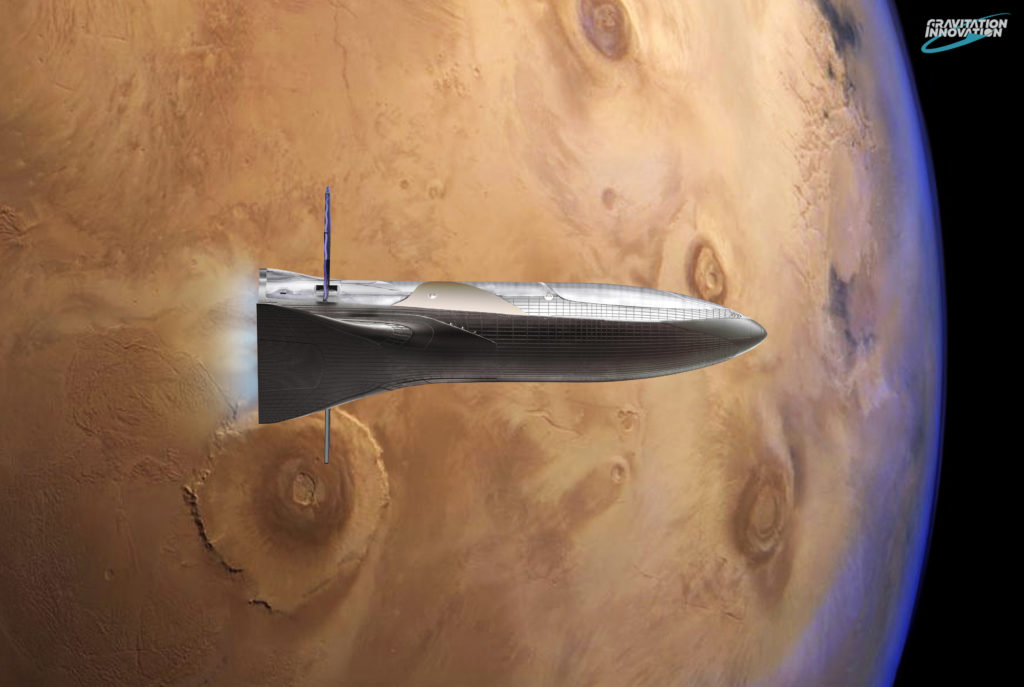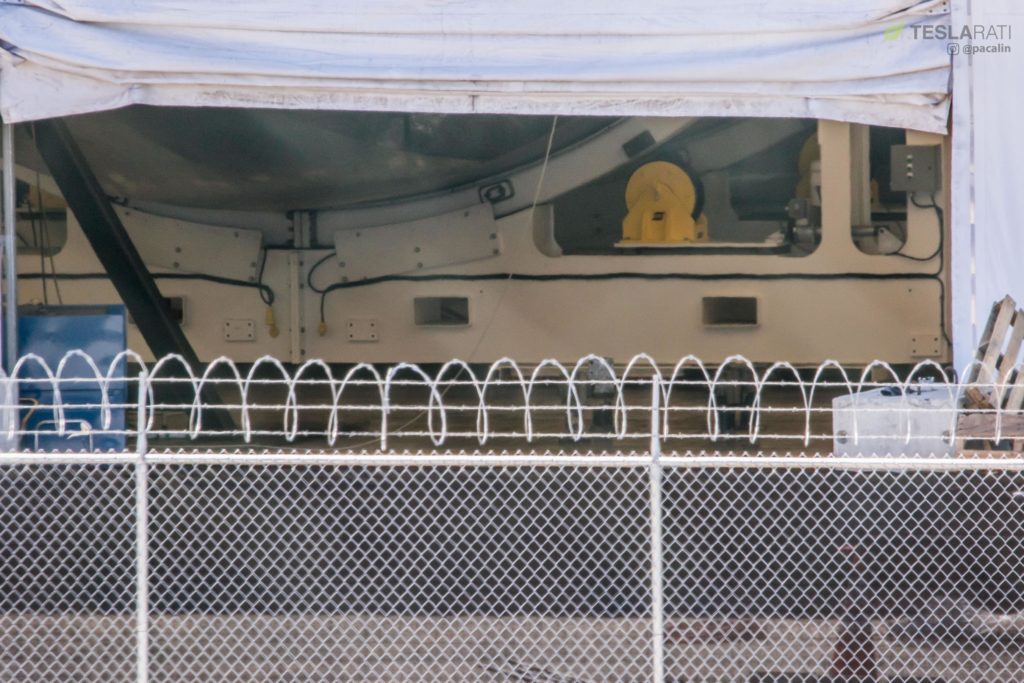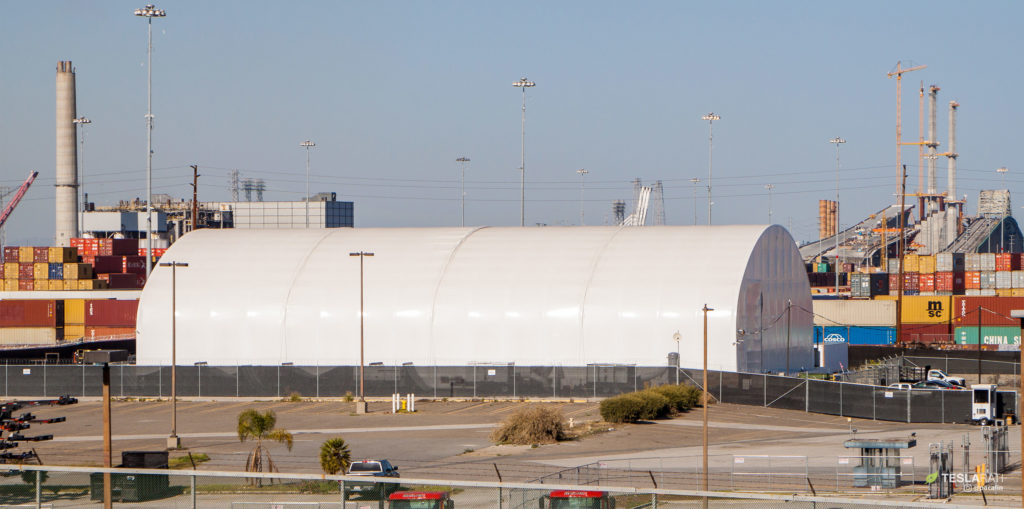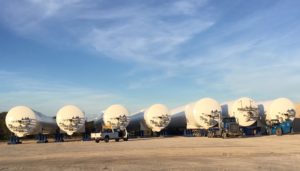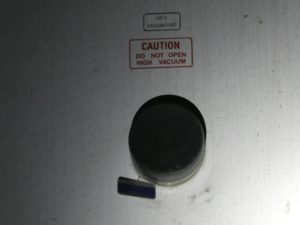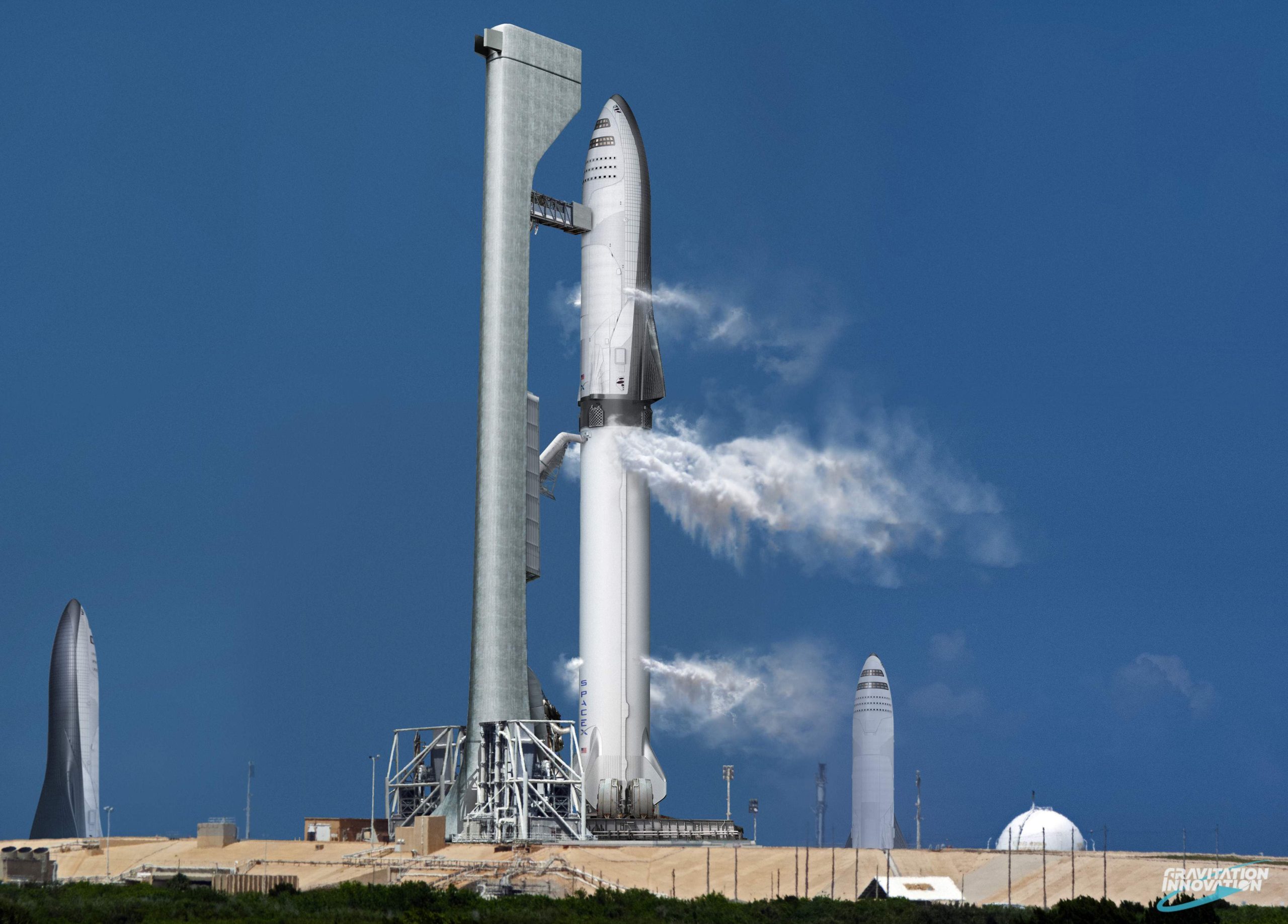
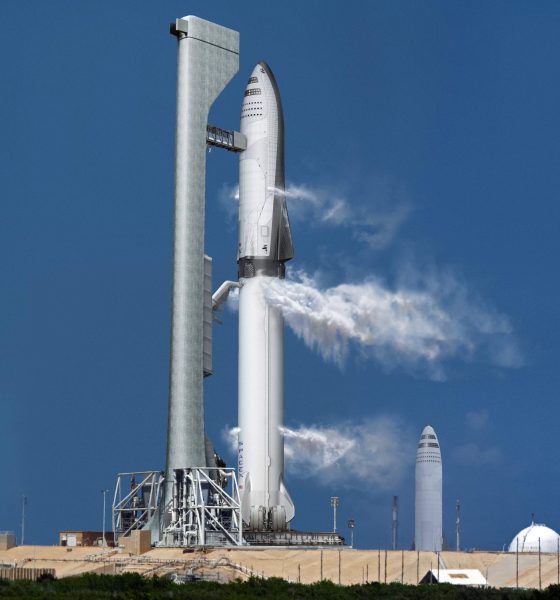
News
SpaceX Mars rocket test site receives first huge rocket propellant storage tank
SpaceX has delivered one of the first undeniably rocketry-related pieces of hardware to its prospective Boca Chica test and launch facility in South Texas, this time in the form of a massive 100,000-gallon liquid oxygen tank now stationed adjacent to the company’s ~600 kW Tesla solar and battery array.
In a statement provided to local paper Valley Morning Star, SpaceX spokesperson Sean Pitt filled in a few of the details and confirmed that the LOX tank had been delivered to Boca Chica as part of an ongoing effort to ready the site for initial testing – and eventually launches – of an unspecified “vehicle”
“Delivery of a new liquid oxygen tank, which will be used to support propellant-loading operations during launch and vehicle tests, represents the latest major piece of launch hardware to arrive at the [South Texas] site for installation.” – SpaceX
The official SpaceX statement may not have explicitly stated that the aforementioned “vehicle” was something other than Falcon 9 or Heavy, but it can be all but guaranteed that the testing and launching described refers to the company’s next-generation Mars rocket, a completely reusable architecture known as BFR.
An immense liquid oxygen (LOX) tank just arrived at @SpaceX's prospective Boca Chica, TX facility, likely to be dedicated to BFR & BFS testing. @NASASpaceflight forum user "Nomadd" caught some of the first detailed photos, as well as the tank's arrival at SpaceX land on July 11. pic.twitter.com/hr7SeA6BGw
— Eric Ralph (@13ericralph31) July 12, 2018
A slow burn in South Texas
Over the past 6-9 months, SpaceX CEO Elon Musk and President/COO Gwynne Shotwell have repeatedly spoken on the subject of SpaceX’s South Texas ambitions, lending unambiguous credence to the idea that the Boca Chica rocket facility will be almost exclusively dedicated to testing BFR’s first flightworthy spaceship prototypes, beginning with a series of familiar suborbital “hops”.
- Artist David Romax’s jaw-dropping rendition of a BFR burning to Mars orbit. The craft’s various curves and hull complexities will likely rely on cutting-edge composite joining tech to function. (Gravitation Innovation)
- SpaceX may well already be fabricating propellant tanks and structural components for the first Mars spaceship prototype in a giant tent at Port of San Pedro. July 1st. (Pauline Acalin)
- An overview of SpaceX’s Port of LA tent, April 2018. While not confirmed, SpaceX seems to intend to begin early BFR prototype construction at the temporary facility. (Pauline Acalin)
In the early days of SpaceX’s Falcon 9 reusability program, the company completed several different phases of short flights (“hops”, hence the Grasshopper label) of a development version of a Falcon 9 booster, ranging from purely vertical jaunts just above the pad to 1000+ meter cross-range maneuvers, tests that ultimately culminated in SpaceX’s extraordinarily reliable Falcon 9 and Heavy booster recovery capabilities. Something similar – albeit somewhat more ambitious – is planned for BFR, starting with a prototype of the upper stage (spaceship). Musk described these plans in more detail in an October 2017 Reddit AMA:
Will we see BFS hops or smaller test vehicles similar to Grasshopper/F9R-Dev?
A (Elon): A lot. Will be starting with a full-scale Ship doing short hops of a few hundred kilometers altitude and lateral distance. Those are fairly easy on the vehicle, as no heat shield is needed, we can have a large amount of reserve propellant and don’t need the high area ratio, deep space Raptor engines.
Speaking a bit less than five months later after the stunningly successful debut of Falcon Heavy, Musk expanded further on the BFR test program, reiterating that spaceship hop testing would “most likely … happen at our Brownsville [South Texas] location,” perhaps as early as 2019.
“We’ll do flights of increasing complexity. We really want to test the heat shield material… like fly out, turn around, accelerate back real hard, and come in hot to test the heat shield.”
- Blue Origin’s New Glenn LOX and liquid methane (LNG) propellant tanks, looking suspiciously identical to the SpaceX tank that just arrived in Boca Chica. It’s likely that both companies are using the same contractor. (Blue Origin)
- Captured by NASASpaceflight user nomadd before it arrived in Boca Chica, the storage tank is clearly vacuum-insulated. (NASASpaceflight /u/nomadd)
- An immense liquid oxygen (LOX) tank arriving at SpaceX’s prospective Boca Chica BFR testing facility, July 11th. (NASASpaceflight.com /u/Nomadd)
Musk also noted that he expected the first full-up orbital launch with both the Booster (BFB) and Spaceship (BFS) could happen as soon as 2021 or 2022. Shotwell, on the other hand, stated in early 2018 and again more recently that she believed BFR could begin its first orbital test missions as early as 2020, an extraordinarily rare moment where the typically pragmatic executive appeared to be more confident than Musk, often lambasted for his reliably over-optimistic timelines. About a month later, Musk’s comments were much more closely aligned with Shotwell’s BFR timeline estimates, and he enthusiastically said that that spaceship hop tests would likely begin within the first half of 2019.
The unambiguous arrival of a rocket propellant storage tank – confirmed officially by SpaceX – strongly suggests that activity is about to seriously pick up speed in Boca Chica for the first time in a year and a half, paving the way for full-scale hop tests of the first Mars spaceship prototype perhaps less than a year from today. Stay tuned…
Follow us for live updates, peeks behind the scenes, and photos from Teslarati’s East and West Coast photographers.
Teslarati – Instagram – Twitter
Tom Cross – Twitter
Pauline Acalin – Twitter
Eric Ralph – Twitter

Elon Musk
Elon Musk’s X will start using a Tesla-like software update strategy
The initiative seems designed to accelerate updates to the social media platform, while maintaining maximum transparency.

Elon Musk’s social media platform X will adopt a Tesla-esque approach to software updates for its algorithm.
The initiative seems designed to accelerate updates to the social media platform, while maintaining maximum transparency.
X’s updates to its updates
As per Musk in a post on X, the social media company will be making a new algorithm to determine what organic and advertising posts are recommended to users. These updates would then be repeated every four weeks.
“We will make the new 𝕏 algorithm, including all code used to determine what organic and advertising posts are recommended to users, open source in 7 days. This will be repeated every 4 weeks, with comprehensive developer notes, to help you understand what changed,” Musk wrote in his post.
The initiative somewhat mirrors Tesla’s over-the-air update model, where vehicle software is regularly refined and pushed to users with detailed release notes. This should allow users to better understand the details of X’s every update and foster a healthy feedback loop for the social media platform.
xAI and X
X, formerly Twitter, has been acquired by Elon Musk’s artificial intelligence startup, xAI last year. Since then, xAI has seen a rapid rise in valuation. Following the company’s the company’s upsized $20 billion Series E funding round, estimates now suggest that xAI is worth tens about $230 to $235 billion. That’s several times larger than Tesla when Elon Musk received his controversial 2018 CEO Performance Award.
As per xAI, the Series E funding round attracted a diverse group of investors, including Valor Equity Partners, Stepstone Group, Fidelity Management & Research Company, Qatar Investment Authority, MGX, and Baron Capital Group, among others. Strategic partners NVIDIA and Cisco Investments also continued support for building the world’s largest GPU clusters.
News
Tesla FSD Supervised wins MotorTrend’s Best Driver Assistance Award
The decision marks a notable reversal for the publication from prior years, with judges citing major real-world improvements that pushed Tesla’s latest FSD software ahead of every competing ADAS system.

Tesla’s Full Self-Driving (Supervised) system has been named the best driver-assistance technology on the market, earning top honors at the 2026 MotorTrend Best Tech Awards.
The decision marks a notable reversal for the publication from prior years, with judges citing major real-world improvements that pushed Tesla’s latest FSD software ahead of every competing ADAS system. And it wasn’t even close.
MotorTrend reverses course
MotorTrend awarded Tesla FSD (Supervised) its 2026 Best Tech Driver Assistance title after extensive testing of the latest v14 software. The publication acknowledged that it had previously criticized earlier versions of FSD for erratic behavior and near-miss incidents, ultimately favoring rivals such as GM’s Super Cruise in earlier evaluations.
According to MotorTrend, the newest iteration of FSD resolved many of those shortcomings. Testers said v14 showed far smoother behavior in complex urban scenarios, including unprotected left turns, traffic circles, emergency vehicles, and dense city streets. While the system still requires constant driver supervision, judges concluded that no other advanced driver-assistance system currently matches its breadth of capability.
Unlike rival systems that rely on combinations of cameras, radar, lidar, and mapped highways, Tesla’s FSD operates using a camera-only approach and is capable of driving on city streets, rural roads, and freeways. MotorTrend stated that pure utility, the ability to handle nearly all road types, ultimately separated FSD from competitors like Ford BlueCruise, GM Super Cruise, and BMW’s Highway Assistant.
High cost and high capability
MotorTrend also addressed FSD’s pricing, which remains significantly higher than rival systems. Tesla currently charges $8,000 for a one-time purchase or $99 per month for a subscription, compared with far lower upfront and subscription costs from other automakers. The publication noted that the premium is justified given FSD’s unmatched scope and continuous software evolution.
Safety remained a central focus of the evaluation. While testers reported collision-free operation over thousands of miles, they noted ongoing concerns around FSD’s configurable driving modes, including options that allow aggressive driving and speeds beyond posted limits. MotorTrend emphasized that, like all Level 2 systems, FSD still depends on a fully attentive human driver at all times.
Despite those caveats, the publication concluded that Tesla’s rapid software progress fundamentally reshaped the competitive landscape. For drivers seeking the most capable hands-on driver-assistance system available today, MotorTrend concluded Tesla FSD (Supervised) now stands alone at the top.
News
Elon Musk’s Grokipedia surges to 5.6M articles, almost 79% of English Wikipedia
The explosive growth marks a major milestone for the AI-powered online encyclopedia, which was launched by Elon Musk’s xAI just months ago.

Elon Musk’s Grokipedia has grown to an impressive 5,615,201 articles as of today, closing in on 79% of the English Wikipedia’s current total of 7,119,376 articles.
The explosive growth marks a major milestone for the AI-powered online encyclopedia, which was launched by Elon Musk’s xAI just months ago. Needless to say, it would only be a matter of time before Grokipedia exceeds English Wikipedia in sheer volume.
Grokipedia’s rapid growth
xAI’s vision for Grokipedia emphasizes neutrality, while Grok’s reasoning capabilities allow for fast drafting and fact-checking. When Elon Musk announced the initiative in late September 2025, he noted that Grokipedia would be an improvement to Wikipedia because it would be designed to avoid bias.
At the time, Musk noted that Grokipedia “is a necessary step towards the xAI goal of understanding the Universe.”
Grokipedia was launched in late October, and while xAI was careful to list it only as Version 0.1 at the time, the online encyclopedia immediately earned praise. Wikipedia co-founder Larry Sanger highlighted the project’s innovative approach, noting how it leverages AI to fill knowledge gaps and enable rapid updates. Netizens also observed how Grokipedia tends to present articles in a more objective manner compared to Wikipedia, which is edited by humans.
Elon Musk’s ambitious plans
With 5,615,201 total articles, Grokipedia has now grown to almost 79% of English Wikipedia’s article base. This is incredibly quick, though Grokipedia remains text-only for now. xAI, for its part, has now updated the online encyclopedia’s iteration to v0.2.
Elon Musk has shared bold ideas for Grokipedia, including sending a record of the entire knowledge base to space as part of xAI’s mission to preserve and expand human understanding. At some point, Musk stated that Grokipedia will be renamed to Encyclopedia Galactica, and it will be sent to the cosmos.
“When Grokipedia is good enough (long way to go), we will change the name to Encyclopedia Galactica. It will be an open source distillation of all knowledge, including audio, images and video. Join xAI to help build the sci-fi version of the Library of Alexandria!” Musk wrote, adding in a later post that “Copies will be etched in stone and sent to the Moon, Mars and beyond. This time, it will not be lost.”
